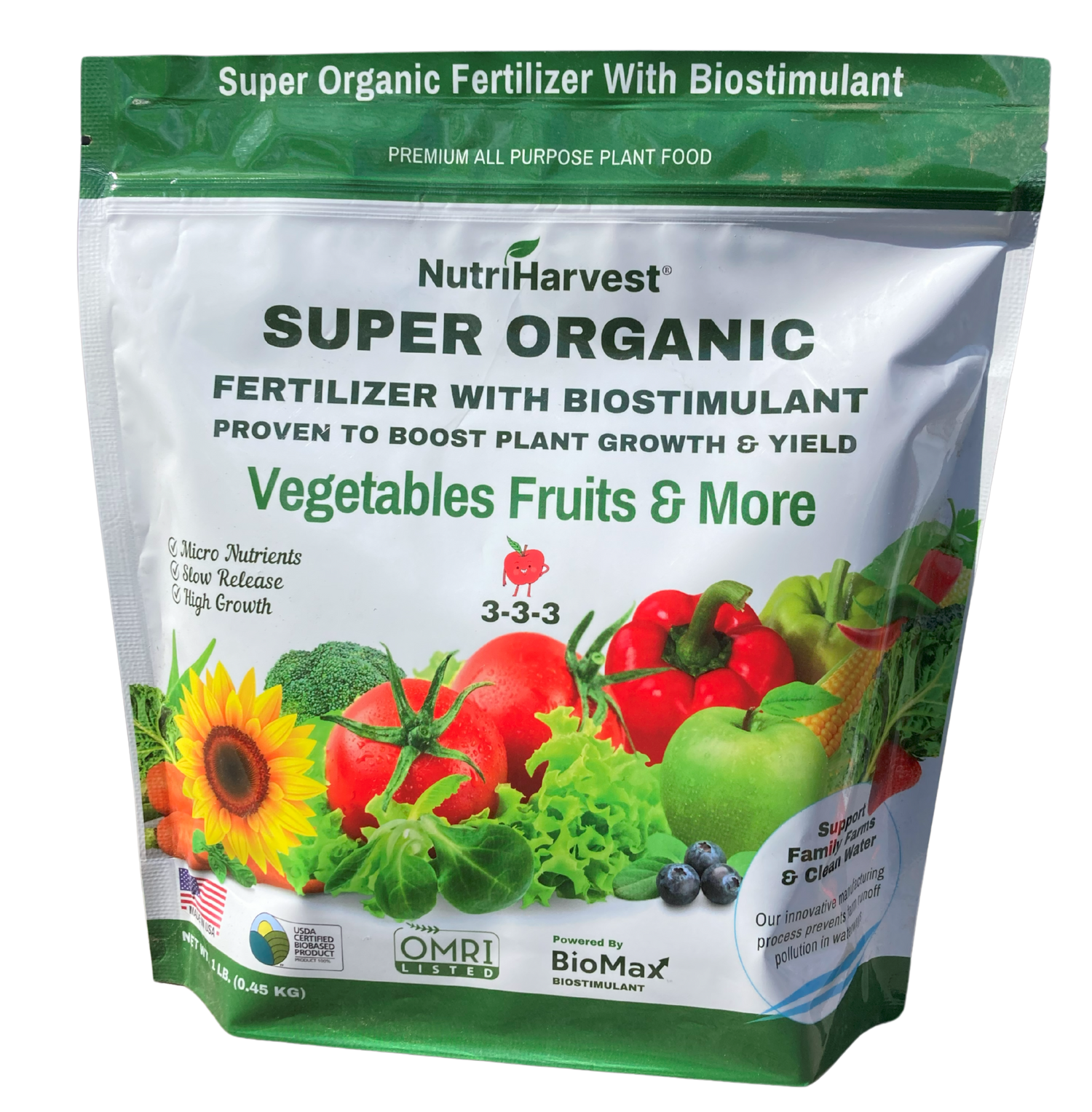Are you itching to get your hands dirty and start growing your own plants from seeds indoors or preparing to transplant plants? It's a rewarding journey, and with the right techniques, you can enjoy lush greenery even in the heart of winter. In this guide, we'll walk you through the basics of growing seeds indoors in 6-steps using organic fertilizer, making it easy for even beginners to dive into the world of indoor gardening.
Why Choose Organic Fertilizer?
First things first, let's talk about organic fertilizer. Unlike synthetic fertilizers, organic fertilizers are derived from natural sources like animal manure or plant materials. They provide a slow release of nutrients, promoting healthier plant growth without the risk of chemical buildup in your soil. Plus, they're environmentally friendly and support sustainable gardening practices. Some like NutriHarvest® Organic Fertilizers go extra mile to clean water pollution and they are both OMRI listed and USDA Biobased certified..
Step 1: Gather Your Supplies

Before you start planting, gather everything you'll need:
- Seeds : Choose high-quality seeds suited for indoor growing. Consider factors like light requirements and space constraints.
- Containers : Opt for small pots or seed trays with drainage holes to prevent waterlogging.
- Organic Potting Mix : Look for a potting mix specifically formulated for seed starting, or create your own blend using compost, perlite, and peat moss.
- Organic Fertilizer : Pick up an organic fertilizer suitable for seedlings, such as NutriHarvest® Organic Fertilizers.
- Watering Can : Use a watering can with a fine nozzle for gentle watering.
- Labels : Don't forget to label your containers to keep track of your plants.
Step 2: Prepare Your Containers and Soil
Fill your containers with the organic potting mix, leaving a little space at the top for watering. Moisten the soil evenly before planting your seeds. This ensures that your seeds have the right environment to germinate and grow.
Step 3: Plant Your Seeds

Follow the instructions on your seed packets for planting depth and spacing. Make small holes in the soil with your finger or a pencil, drop in the seeds, and cover them lightly with soil. Gently press down on the soil to ensure good seed-to-soil contact.
Step 4: Feed Your Seedlings with Organic Fertilizer
Once your seeds have sprouted and developed their first set of true leaves, it's time to start feeding them. Apply your organic fertilizer such as NutriHarvest® Organic Fertilizers according to the instructions on the package and water your seedlings with the solution. Remember, less is more when it comes to fertilizing seedlings. Over-fertilizing can damage delicate roots.
Step 5: Provide Adequate Light and Water

Place your containers in a sunny windowsill or under grow lights to provide sufficient light for healthy growth. Water your seedlings regularly, keeping the soil consistently moist but not waterlogged. Pay attention to the specific water and light requirements of your plant species.
Step 6: Transplant Your Seedlings

As your seedlings grow larger, they'll outgrow their containers and need to be transplanted into larger pots. Use a gentle touch to avoid damaging the roots, and continue to feed them with organic fertilizer to support their growth. Use a good quality non-burning fertilizer such as NutriHarvest® Organic Fertilizers to side dress plant.
Step 7: Enjoy Your Indoor Garden!

With proper care and the right nutrients from organic fertilizer, your indoor seedlings will thrive and reward you with vibrant, healthy plants. Whether you're growing herbs, vegetables, or flowers, there's nothing quite like the satisfaction of nurturing your own indoor garden from seed to harvest.
Final Thoughts
Growing seeds indoors with organic fertilizer is a fantastic way to kickstart your gardening journey and enjoy fresh produce or beautiful blooms year-round. By following these simple steps and embracing organic gardening practices, you'll be well on your way to success. Happy gardening!
Remember, the key to a successful indoor garden is patience and consistency. With time and care, you'll be amazed at what you can achieve with your indoor oasis.
Use a good quality organic fertilizer to ensure a nutritious harvest and care for your environment.



